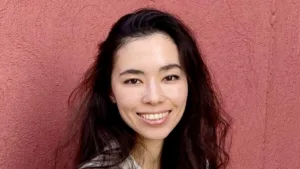Decreased consumer demand for cosmetics and fragrances amid continued social distancing will restrain the recovery in beauty and personal luxury advertising to 1.7% in 2021, according to Zenith’s newly-published ‘Business Intelligence – Beauty and Personal Luxury’ report. This is below the 4.4% growth rate for total adspend in the 11 key markets included in the report.
Beauty and personal luxury adspend fell roughly in line with the market in 2020. The sharp drop in spending on cosmetics and fragrances as people stopped meeting in person was mitigated by continued demand for both hair and skin care. With hairdressers and salons harder to reach, consumers took hair care into their own hands at home. Skin care, meanwhile, benefited from the heightened desire for health-enhancing products during the pandemic.
The report suggests that, during the recovery, overall demand for beauty will not change much as consumers remain reluctant to return to their pre-pandemic habits, reducing sales of cosmetics and fragrances in particular. Most beauty and personal luxury brands will not raise marketing budgets substantially and will be more likely to redeploy spending from under-performing channels instead.
Digital makeover
Beauty and personal luxury brands traditionally spend much more of their advertising budgets on magazines and TV than the average brand. Zenith estimates that in 2020 beauty brands spent 18.3% of their budgets on magazines advertising, 4.3 times more than the average brand, and 42.2% on television, 1.6 times more than average. But these media are becoming less effective as their reach continues to decline.
Beauty brands have been relatively slow to adopt digital advertising, spending 34.1% of their budgets digitally in 2020, compared to 53.1% for the market as a whole. This is a result of the historic lack of premium digital environments that support the high-quality brand imagery that beauty and personal luxury brands need to convey, plus consumers’ desire to sample the products instore. According to Euromonitor International, 11.8% of beauty and personal luxury sales were through ecommerce in 2019, compared to 13.2% for the market as a whole.
However, technologies like video-on-demand and connected TV, and social platforms like Instagram and TikTok, are creating new premium environments that showcase beauty and personal luxury brands effectively. Brands have also greatly stepped up investment in their ecommerce offerings since the start of the pandemic as a matter of necessity, as bricks-and-mortar retail sales shrank.
Caution + innovation
Zenith estimates that the beauty category increased its spending on digital advertising 2.8% in 2020, despite the pandemic. This was twice the 1.4% growth rate of digital advertising across all categories, as beauty and personal luxury brands began to compensate for previous underinvestment. Zenith forecasts average growth of 5.9% a year in digital advertising between 2019 and 2022. Beauty and personal luxury adspend on all other media will decline over this period, by between 1.2% a year for TV and 12.4% a year for magazines.
Christian Lee, Global Managing Director at Zenith, said: “Beauty brands were forced to accelerate their ecommerce strategies in 2020, some pioneering the use of virtual and augmented reality to allow consumers to try on and model products online. Continued innovation in ecommerce technology to improve the consumer experience will be key to unlocking brand growth for 2021 and beyond.”
Jonathan Barnard, Head of Forecasting, Zenith, said: “Growth in beauty and personal luxury advertising will lag behind the market while consumers remain cautious about travelling in public and meeting in person. But by investing in digital technology that embeds ecommerce into the heart of their operations, brands will prime themselves for more rapid growth when demand picks up.”
The eleven markets included in the Zenith report are Australia, Canada, France, Germany, India, Italy, Russia, Spain, Switzerland, the UK and the US, which between them account for 59% of total global adspend. Beauty and personal luxury is defined as the combination of four sub-categories: cosmetics, fragrances, hair care and skin care.








